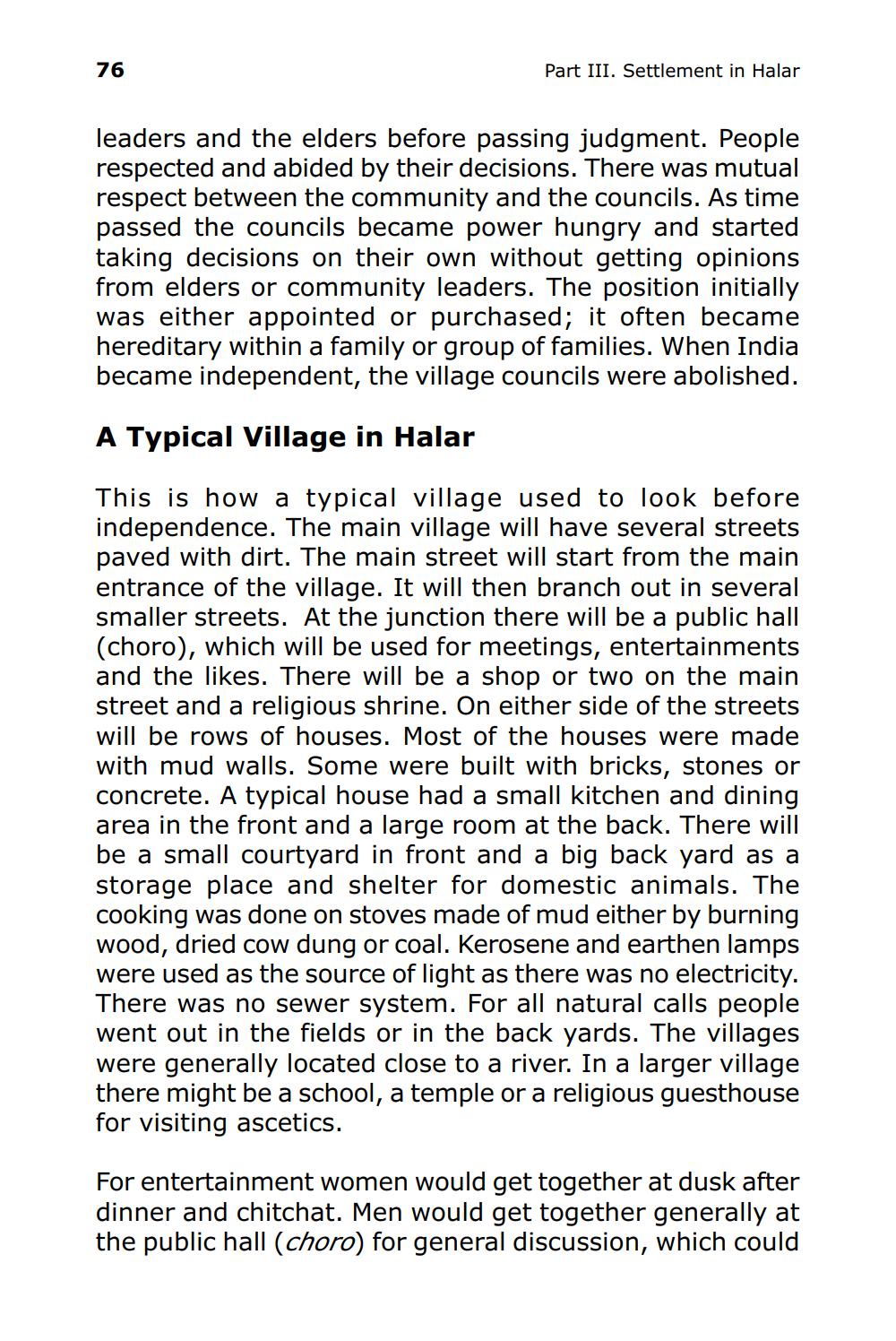________________
76
Part III. Settlement in Halar
leaders and the elders before passing judgment. People respected and abided by their decisions. There was mutual respect between the community and the councils. As time passed the councils became power hungry and started taking decisions on their own without getting opinions from elders or community leaders. The position initially was either appointed or purchased; it often became hereditary within a family or group of families. When India became independent, the village councils were abolished.
A Typical Village in Halar
This is how a typical village used to look before independence. The main village will have several streets paved with dirt. The main street will start from the main entrance of the village. It will then branch out in several smaller streets. At the junction there will be a public hall (choro), which will be used for meetings, entertainments and the likes. There will be a shop or two on the main street and a religious shrine. On either side of the streets will be rows of houses. Most of the houses were made with mud walls. Some were built with bricks, stones or concrete. A typical house had a small kitchen and dining area in the front and a large room at the back. There will be a small courtyard in front and a big back yard as a storage place and shelter for domestic animals. The cooking was done on stoves made of mud either by burning wood, dried cow dung or coal. Kerosene and earthen lamps were used as the source of light as there was no electricity. There was no sewer system. For all natural calls people went out in the fields or in the back yards. The villages were generally located close to a river. In a larger village there might be a school, a temple or a religious guesthouse for visiting ascetics.
For entertainment women would get together at dusk after dinner and chitchat. Men would get together generally at the public hall (choro) for general discussion, which could




